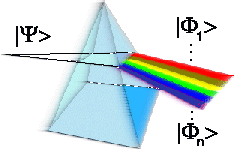Phys. Rev. B 65, 045404 (2002)
Magdalena A. Załuska-Kotur, Stanisław Krukowski, Zbigniew Romanowski, Łukasz A. Turski
A model describing surface phase transitions in an O/W(110) system is proposed. The model is based on the hourglass structure of adsorption sites of oxygen on tungsten surface. The hourglass structure of the site in the O/W(110) system has been confirmed by quantum mechanical density functional theory (DFT) calculations. The results of DFT calculations indicate that the saddle point at the center has the energy 0.2 eV higher than two symmetric minima. An essential ingredient of the model is the assumption that the interaction of O atom with the other O atom, located in nn site, lifts the degeneracy of the two energy minima, converting the hourglass structure of the adsorption site to a single state site. The O/W(110) adsorption model can be projected onto a system consisting of double spins distributed on a two-dimensional square lattice. The properly chosen two-body interactions in the square lattice double-spin system are capable of recovering all phase transitions that are observed in the O/W(110) system. Due to well known mapping between spin and the lattice gas systems, the proposed model can be used to describe multidomain structure in the O/W(110) system
skip to main |
skip to sidebar

Quantum Optics Group, Institute of Physics, Polish Academy of Sciences

Browse publications by author
- Mariusz Gajda (30)
- Arkadiusz Orłowski (29)
- Magdalena Załuska-Kotur (20)
- Maciej Janowicz (16)
- Marian Rusek (16)
- Jan Mostowski (14)
- Zofia Białynicka-Birula (10)
- Władysław Żakowicz (9)
- Emilia Witkowska (2)
- Tomasz Świsłocki (2)
- Filip Krzyżewski (1)
- Jaroslaw Gocałek (1)
- Łukasz Badowski (1)